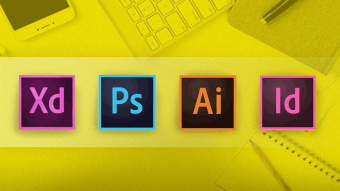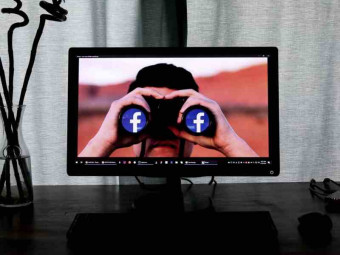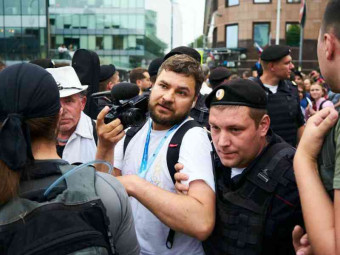Oculus Quest Development With Unity3d Fundamentals
Tags: Virtual Reality
Get a jump start on development with the Oculus Quest and Quest2
Last updated 2022-01-10 | 4.6
- Knowledge of the construction of a Virtual Reality game or application through hands-on guidance from start to finish.- Techniques and principles for building Oculus Quest and Quest 2 games and applications.
What you'll learn
* Requirements
* Basic understanding of Unity* such as transforms
* components
* materials etc.
* General (OO) programming knowledge . The language we are going to use is C# but knowledge in any object oriented language will work.
* Access to a Oculus Quest or Quest2 headset (to be able to run the projects)
Description
I decided to create this course since when I started developing for VR I found it hard to find resources that shows the whole process from start to finish. I found parts here and there and had to piece them together myself.
The goal of this course is to provide a hands on guide from beginning to end for VR development with Oculus Quest and Quest2.
We will do this through a set of project where we do hands on, practical development, creating two apps which we will deploy to the headset for testing.
We will start from scratch by downloading and installing the necessary applications and libraries and set everything up. We will even build, deploy and try a small but functional application in the headset.
After that we dive right into interaction. We will setup our virtual hands and create an environment with which we can interact. We will enhance the game with user interface concepts like canvases, panels and buttons.
Next we will start moving by exploring the possibilities of locomotion. We first get an overview of the mechanisms and then we will dig deeper into the components, like handler and transitions.
In the last section we will briefly look into how to distribute you creations to the world.
After this course you should have a firm foundation of Oculus Quest and Quest2 development and be ready to create on your own.
Who this course is for:
- Anyone interested in building Oculus Quest or Quest2 games and applications
- It is not for student looking to learn Unity and/or C# per se.
- It is not a programming course.
Course content
7 sections • 26 lectures
Introduction Preview 02:53
Course Overview Preview 02:08
Installing Unity Preview 03:50
In the first lecture we start from the very beginning and download and set up Unity3D from scratch. We download the Unity Hub, set up a licence for Unity and install a Unity editor.
Installing Oculus Integration Preview 02:26
In this lecture we will create a project and set it up for Android and Oculus Quest development. We will download and install Oculus Integration.
The Oculus Integration for Unity package includes an interface for controlling VR camera behavior, a first-person control prefab, a unified input API for controllers, advanced rendering features, object-grabbing and haptics scripts for Touch, debugging tools, and more.
A First VR App Preview 09:17
In this lecture we will do a really simple VR application from start to finish. We will build and deploy it to the headset so you see the whole development process.
Setting up the Towers of Hanoi project Preview 09:52
Adding object to interact with Preview 05:53
In this lecture we will add the cubes we are going to interact with.
Implementing Distance Grab Preview 06:54
In this lecture we will add the ability to grab objects from a distance.
Adding Logic - Handling legal cubes Preview 08:31
In this lecture we will add some logic to this game or to the cubes will move.
Adding Logic - Handling the finished game Preview 07:33
In this lecture we will implement the logic for checking if we have achieved our goal, that is finished the game.
Basic User Interface Development Preview 04:09
In this lecture we're going to add the UI to the application, that is the user interface that's going to display information and that we later will interact with.
Creating a Restart Panel Preview 10:37
In this lecture we will add the possibility to restart or exit the game when we finish.
Adding a Skybox Preview 02:26
In this lecture we'll try to improve the scenery by adding a nicer background.
Adding Unity Events Preview 03:03
In this lecture we will prepare for coming functionality. We will do that by improving the code provided by Oculus through the use of Unity Events.
Counting Moves Preview 05:30
In the Logic script, we create a field for the grabbable as well as the gameManager script.
Introduction to the Debug UI Preview 07:12
In this lecture we'll learn about the Debug UI.
It's an easy way to build UI and menus etc but it's not intended for ordinary use but rather for debug.
Scenery Setup Preview 04:03
In this section we are going to look into locomotion, that is moving in VR.
Locomotion Controller Components Preview 00:02
A first component setup Preview 02:56
Aim Handlers & Transitions Preview 04:53
In this lecture we will look at Aim Handlers and Transition Types.
Post Teleport Orientation Preview 02:29
In this lecture we were looking to Post Teleport Orientation, that is how we are oriented after the teleportation.
Input Handlers Preview 04:05
In this lecture we will look into the Input Handlers.
Target Handlers Preview 11:38
The last lecture covers Target Handlers.








 This course includes:
This course includes:
















